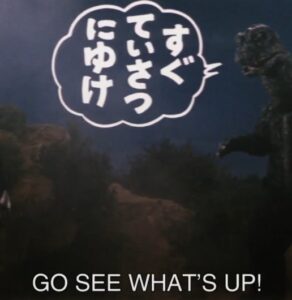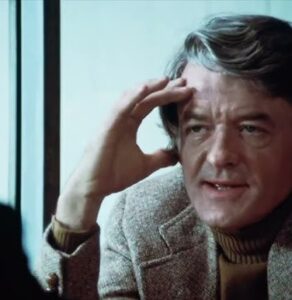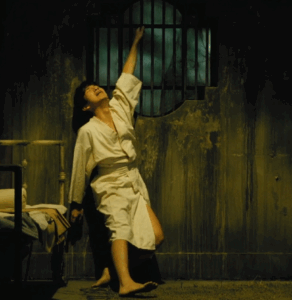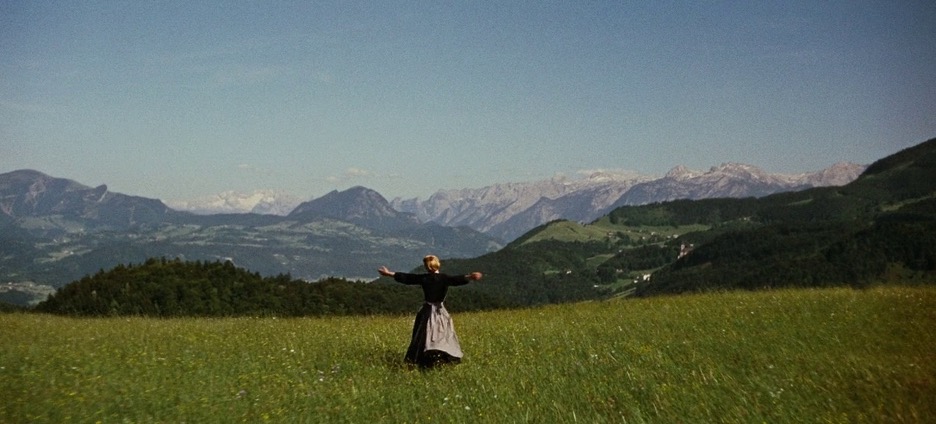
Satire, Subversion and Nazis: To Be or Not to Be
|Penny Folger| Hitler stands in a town square in Poland while dumbfounded townspeople encircle him, looking as though they’re witnessing a talking polar bear, or perhaps something much more absurd and dangerous. A small girl in the crowd suddenly pipes up, “May I have...

A (Former) Musical Hater Finally Hears The Sound of Music
|Chris Ryba-Tures| It’s taken me a long, long time to admit this to myself: hating stuff isn’t very cool. Hating something, especially when you make that hate part of your personality, a talking point at parties, a fulcrum to get a rise out of folks, is pretty tedious, exhausting, and boring, isn’t it?

The Sound of Music and the History of the Broadway to Hollywood Pipeline
|Dan McCabe| I recently visited New York, and as I walked along West 45th Street through its famous theater district, I couldn’t help but imagine the marquees that came and went from the Great White Way over the last century. One such show, opening in 1959, was The Sound of Music

Donnie Darko and the Inevitability of Teenagers
|Ryan Sanderson| When I began this process, I did not know how personal writing about Donnie Darko would feel. It was never one of my favorite films. I was introduced to the film by my freshman roommates alongside a rolling festival of late 90s/early aughts male angst...

the killing moon
|Finn Odum| This essay contains spoilers about Donnie Darko. The night I’m writing this is the evening of July third. Five years ago, somewhere between this time that evening and the morning of the fourth, my grandfather Jim passed away. I don’t like fireworks anymore. love will tear us apart...

History’s Greatest Puzzle Room in which the Prize is Punching Nazis: Indiana Jones and the Last Crusade
|Allison Vincent| When we first started dating, my wife worked at a puzzle room in St. Paul, MN. One of the many perks of such a venture is that I got to play-test rooms occasionally. One such room was heavily influenced by a certain wizarding world created by She-Who-Must-Not-...

The Father, the Son, and the Holy Grail
|Lucas Hardwick| ***Only the penitent man will admit to and apologize for the spoilers ahead.*** The condition of the nine-year-old boy is a defining time for a kid, let alone an entire generation from that point forward. Teetering on the precipice of adolescence, still too young to be...

The Alchemist: Steven Soderbergh’s Version of Raiders of the Lost Ark
|Devin Bee| During his brief retirement from directing movies—between Behind the Candelabra (2013) and Logan Lucky (2017)—Steven Soderbergh was doing some of his most exciting work. He acted as director, editor, cinematographer, and primary camera operator for all 20...

Indiana Jones and the Korean Barbecue Fried Chicken IPA
|Lucas Hardwick| The views expressed in the article regarding Doritos, flavored booze, and India Pale Ales do not reflect those of the (volunteer) staff of Trylon Cinema, Perisphere Blog, most of Portland, Austin, Louisville, Jeremy S. from Junior year 21st Century Class at Hopkins...

Charlie Chaplin’s Renegade Anti-Fascism in The Great Dictator
|Ed Dykhuizen| During the first half of the twentieth century, there was no bigger star than Charlie Chaplin. At a very young age he rose from English music halls to American comedy shorts. His defining character The Little Tramp debuted in only his second film, the 1914 Keystone...

The Great Dictator: What Else is There to Say?
|Brad Bellatti| For the better part of 15 years, the above image of Chaplin has bothered me. No matter how many times I watch this sequence, the finale of Charlie Chaplin’s The Great Dictator (1940) shakes me up. I’ve tried many times to find the right words to express this sentiment...

Godzilla vs. Gigan: Kaiju, Technology, and a Turkish Take on Gentle Emotions
|Matthew Christensen| My husband Luka and I have divergent tastes in movies. If I am sitting in the living room watching an old Hollywood musical or a period piece, he takes one look at the television, announces in a mix of Turkish and English, “Tamam. I will be in bed reading a book. Hadi...

Interview: A Grandmother on Godzilla vs. Gigan
|Ben Jarman| My mom is back with her take on another film that would normally disinterest her: Godzilla vs. Gigan. My mom never watched Godzilla films with me when I was a kid, but she never stopped me from watching or pretending I was a giant creature in my backyard. A giant to her is...

“Cha too ma laya conky, ya neema loka nyan:” Return of the Jedi Appreciation
|Ben Jarman| Before prequels and sequels, kids used to tell me Return of the Jedi is the best Star Wars movie. I used to tell the same thing to adults just after the movie came out. Then I grew and my body cracked, forming a chip on my shoulder. Return of the Jedi was suddenly just a...

Star Wars Film Love: Or, How I Learned to Stop Worrying and Love the Theater
|Devin Warner| Star Wars Episode V: The Empire Strikes Back is unquestionably my favorite film of all time, although I have never seen it in a movie theatre, only on VHS, DVD, Blu Ray, and 4K but by god with this Trylon series that will finally change. My love of Star Wars started when I was...

The Bright Flame of Resistance: Star Wars
|John Costello| Dear H., I'm writing you about a work featuring a bold woman, a man with a fast vehicle, and an ominous edifice, Jane Austen's Northanger Abbey, in the hope that I can relate your interest in that book to another work. You love the social dynamics of Regency Britain, the...

The Virgin Spring: Film as Folk Ballad
| Sophie Durbin | Folk ballads are precious, living traces of the past that explain how things came to be as they are, or how things once were. Buried within layers of variation and localization, the original singers’ voices remain a haunting echo. Documenting a ballad...

Leaves in the Storm: The Role of Nature in The Virgin Spring
| Jared Meyer | Ingmar Bergman was the first filmmaker who made me realize you can film the invisible. While first discovering my love of film and beginning my practice as a filmmaker, Bergman’s films broke open my perception of movies as entertainment, that they could be just as complex a probing...

health class lessons in cinematic heroin
| Ben Tuthill | The Physical Education department at St. Paul Central made the inspired decision in the mid-2000s to screen Darren Aronofsky's Requiem for a Dream as the capstone to the anti-drug unit of sophomore-year health class. We needed...

Natural Enemies: Man on the Moon
| Jackson Stern | Of all the corruption, illnesses, and injustices affecting the world today (you could count them on fifteen hands), few are as elusive as what many refer to as the “male loneliness epidemic.” We seem to discuss this very real sickness as if...

The American Family is Dying, Anyway
|Finn Odum| “It’s Bleak” | The 1970 Peter Boyle film Joe is not part of our Bleak Week programming—though you’d be forgiven if you thought it was. Joe, which we programmed to kick off our Cantankerous Peter Boyle series, follows a wealthy advertising executive (Dennis Patrick)

Enter Al Pacino: How the Master’s First Starring Role in The Panic in Needle Park Compares to Later Performances
| Dan McCabe | “I thought it was something I could play. A few people could have done it, but it was a relatively castable role for me. I had made my theater bones playing these types of street characters...

From Roses to Dogra: Speculating Toshio Matsumoto’s Bleak Cinematic Journey
| Dan Howard | When was the last time you had a really messed up dream? Did you want to just shake it off and forget the dream, or did it pique your curiosity? In the case of both avant-garde and bleak storytelling, it’s speculated that those who are drawn towards...

The Maddening Mystery of Dogra Magra
| Ryan Sanderson | Dogra Magra (Toshio Matsumoto, 1988) is a detective story the same way that Radiohead’s King of Limbs is a dance album. Many of the pieces are there, but they’re arranged in a way that will infuriate some and perplex many more. It left me surfing through doctoral theses on...



